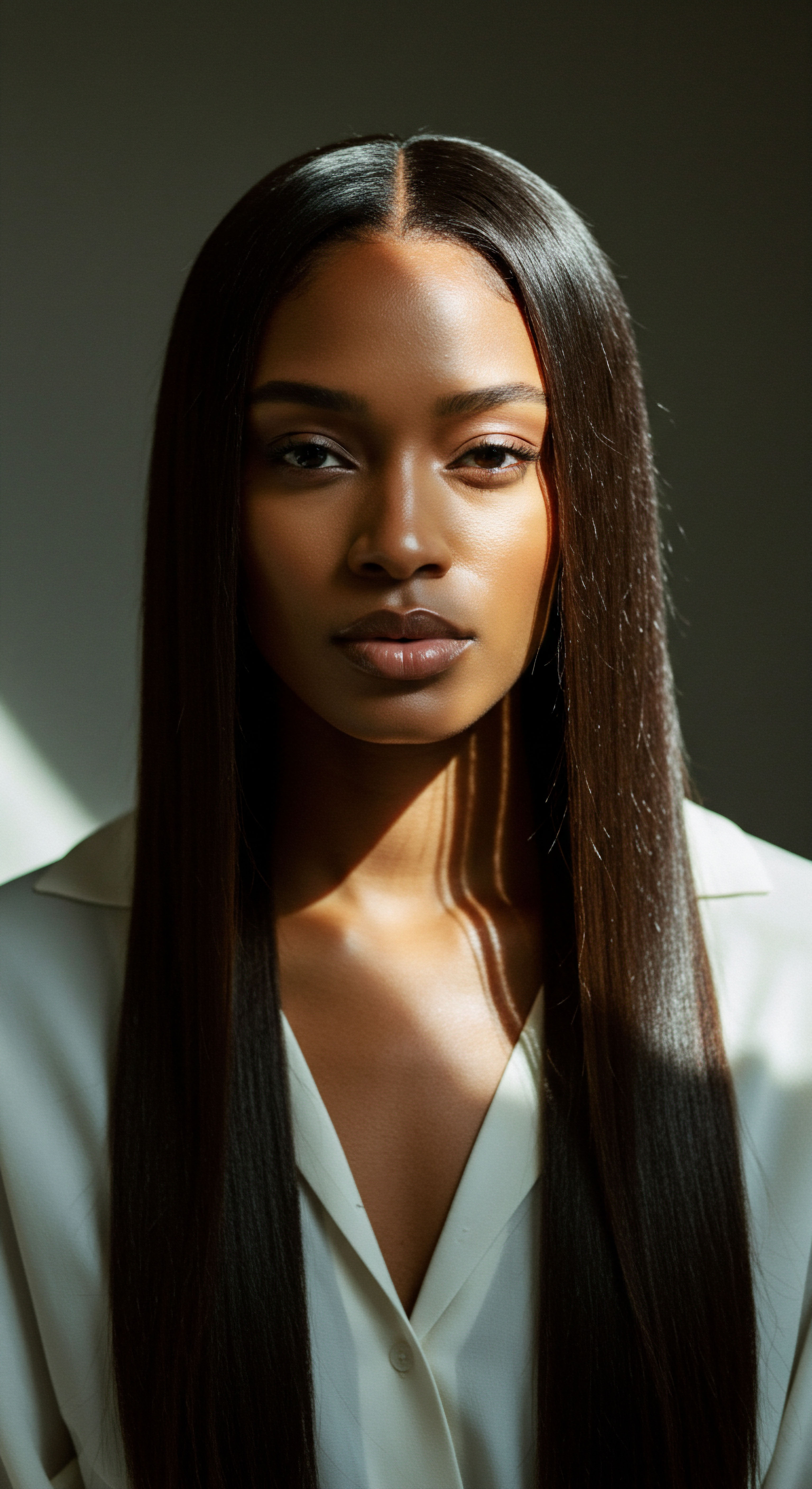
Roots
Our strands, in their exquisite coiled forms, carry stories whispered across generations, tales of resilience and beauty. They are a testament to heritage, a living canvas that speaks volumes without uttering a sound. To truly understand how hydrolyzed silk proteins interact with these magnificent textures, we must first journey inward, beneath the surface of each individual strand, to its very core. It is here, within the intricate architecture of hair, that the whispers of science meet the wisdom of ancestral care.
Hair, a marvel of biological design, consists primarily of Keratin, a fibrous protein. This keratin forms the bulk of the hair shaft, organized into three main layers ❉ the medulla, cortex, and cuticle. The outermost layer, the cuticle, resembles overlapping shingles on a roof, acting as a protective shield. For coily strands, this cuticle layer often naturally lifts at the many twists and turns along the fiber, rendering it more prone to moisture loss and external damage.
This inherent characteristic means coily hair often exhibits higher porosity, readily absorbing but also quickly releasing moisture. Understanding this foundational aspect of coily hair’s structure is paramount to appreciating the unique role hydrolyzed silk proteins can play in its care.

What are Hydrolyzed Silk Proteins and Their Place in Hair Care?
Hydrolyzed silk proteins are, in essence, silk proteins that have undergone a process called Hydrolysis. This chemical reaction, involving water, breaks down the larger silk protein molecules into smaller fragments, often referred to as peptides or amino acids. This reduction in molecular size is crucial because it allows these beneficial components to interact more effectively with the hair shaft. Without this process, the silk protein molecules would simply sit on the surface, offering minimal, if any, lasting benefit.
Historically, silk has been revered not only for its luxurious feel in fabrics but also for its perceived benefits in beauty rituals. From ancient China, where silkworms were so precious they were guarded secrets, to modern formulations, the allure of silk in hair care has persisted. This ancient appreciation finds its contemporary validation in the science of hydrolyzed silk proteins, which harness the inherent qualities of silk in a form readily usable by our hair.
Hydrolyzed silk proteins, diminished in size, offer a unique affinity for coily strands, addressing their inherent structural characteristics.
The application of proteins in hair care is not a recent discovery; indeed, historical records show various natural protein sources being used in ancient hair care practices. For instance, Ayurvedic traditions in India utilized herbs and oils for hair health, while ancient Egyptians used natural oils. The modern scientific approach refines these age-old principles, allowing for targeted benefits.
The distinction between different types of hydrolyzed silk proteins lies in their origin within the silk fiber and their subsequent processing. Silk itself is composed of two primary proteins ❉ Fibroin, which forms the structural core, and Sericin, a sticky outer layer that binds the fibroin strands together in the silkworm cocoon. Both can be hydrolyzed, yielding different compositions of amino acids and molecular weights, which in turn dictate their specific benefits for coily strands.
For coily hair, which often battles dryness and seeks enhanced definition, the introduction of carefully selected hydrolyzed silk proteins can serve as a gentle yet potent ally. They offer a pathway to improved moisture retention, strengthened resilience, and a touch of that coveted, light-reflecting sheen, all while respecting the hair’s natural inclinations.

Ritual
As we move from the foundational understanding of hair to its daily rhythms, the desire for practical wisdom becomes palpable. The whispered hope for strands that feel cared for, that respond with grace to our touch, guides us. It is within these daily or weekly practices, these intimate rituals of cleansing, conditioning, and styling, that the true character of hydrolyzed silk proteins begins to unfold for coily hair. Their integration into our routines is not merely about application; it is about a conscious choice to support the inherent beauty of our hair.
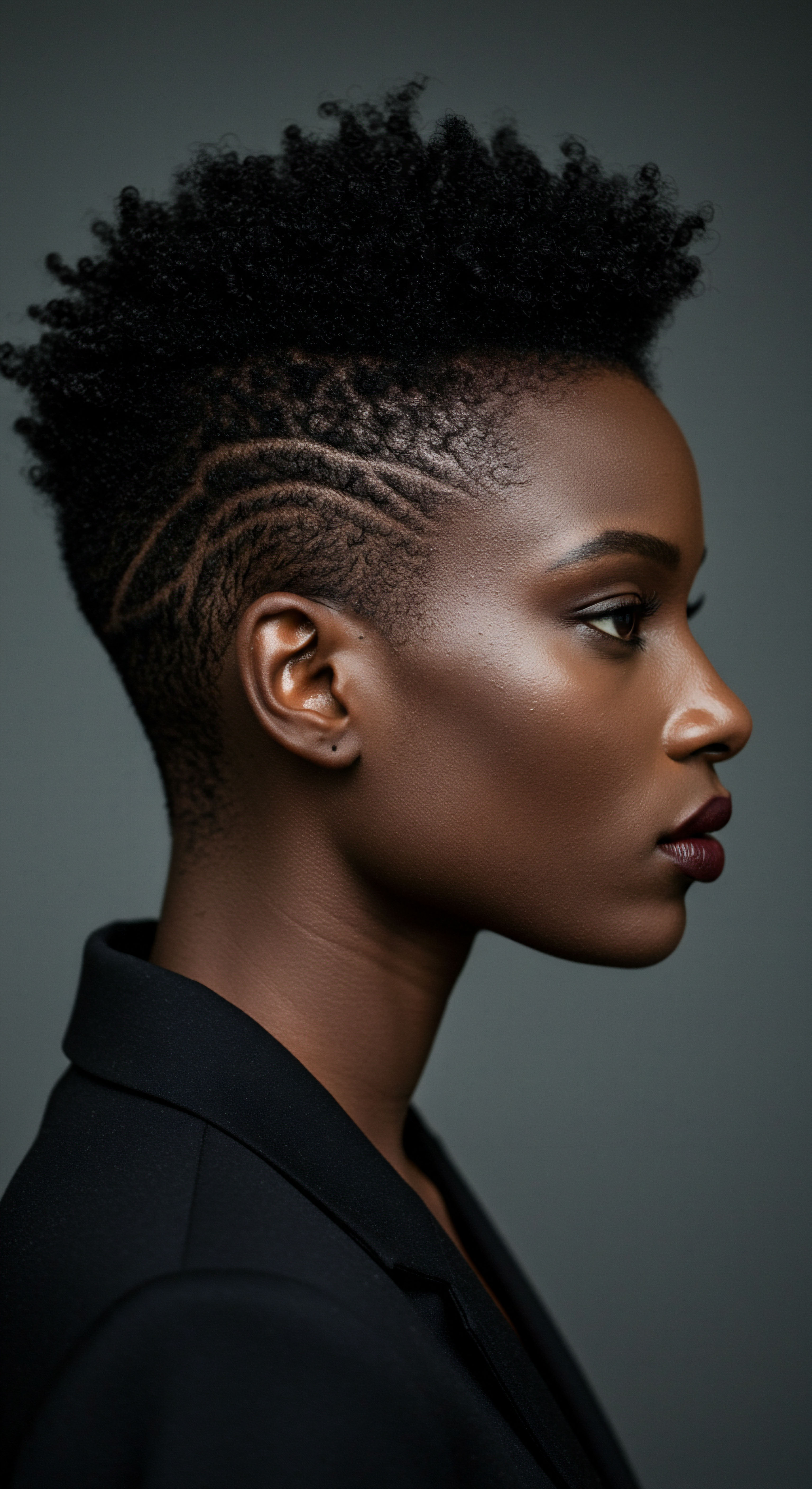
How Do Different Molecular Weights of Hydrolyzed Silk Proteins Interact with Coily Strands?
The effectiveness of hydrolyzed proteins on hair, especially on coily textures, is deeply tied to their Molecular Weight. Proteins, when hydrolyzed, are broken into smaller fragments. The size of these fragments dictates their ability to penetrate the hair shaft or to form a protective film on the surface. This is a critical consideration for coily hair, given its unique cuticle structure and propensity for dryness.
- Low Molecular Weight Hydrolyzed Silk Proteins ❉ These are the smallest fragments, often less than 1000 Daltons. Their diminutive size allows them to penetrate beyond the cuticle layer and into the hair’s cortex. Once inside, they can contribute to strengthening the hair’s internal structure, improving elasticity, and helping the hair retain moisture from within. For coily strands, which are often more susceptible to internal damage due to their shape and styling practices, this deep penetration can be transformative, offering reinforcement from the inside out.
- Mid Molecular Weight Hydrolyzed Silk Proteins ❉ Ranging approximately from 1000 to 5000 Daltons, these proteins are substantive to hair, meaning they readily bond to the hair and are not easily rinsed away. They work both by partially penetrating the outer layers and by forming a conditioning film on the surface. This dual action helps reduce friction, making detangling easier and decreasing the likelihood of breakage, a common concern for coily hair.
- High Molecular Weight Hydrolyzed Silk Proteins ❉ These larger fragments, often exceeding 10,000 Daltons, primarily function by forming a protective, moisture-holding film on the hair’s surface. This film can smooth the cuticle, enhance shine, and provide a barrier against environmental stressors. While they do not penetrate as deeply, their surface action is invaluable for improving the immediate feel and appearance of coily hair, contributing to a polished, less frizzy finish.
The interplay of these varying molecular weights allows for a comprehensive approach to coily hair care. A product formulated with a blend of hydrolyzed silk proteins of different sizes can offer both internal repair and external protection, addressing the multifaceted needs of textured hair.
The precise molecular weight of hydrolyzed silk protein determines its ability to penetrate or coat hair, influencing internal strength or external smoothness.
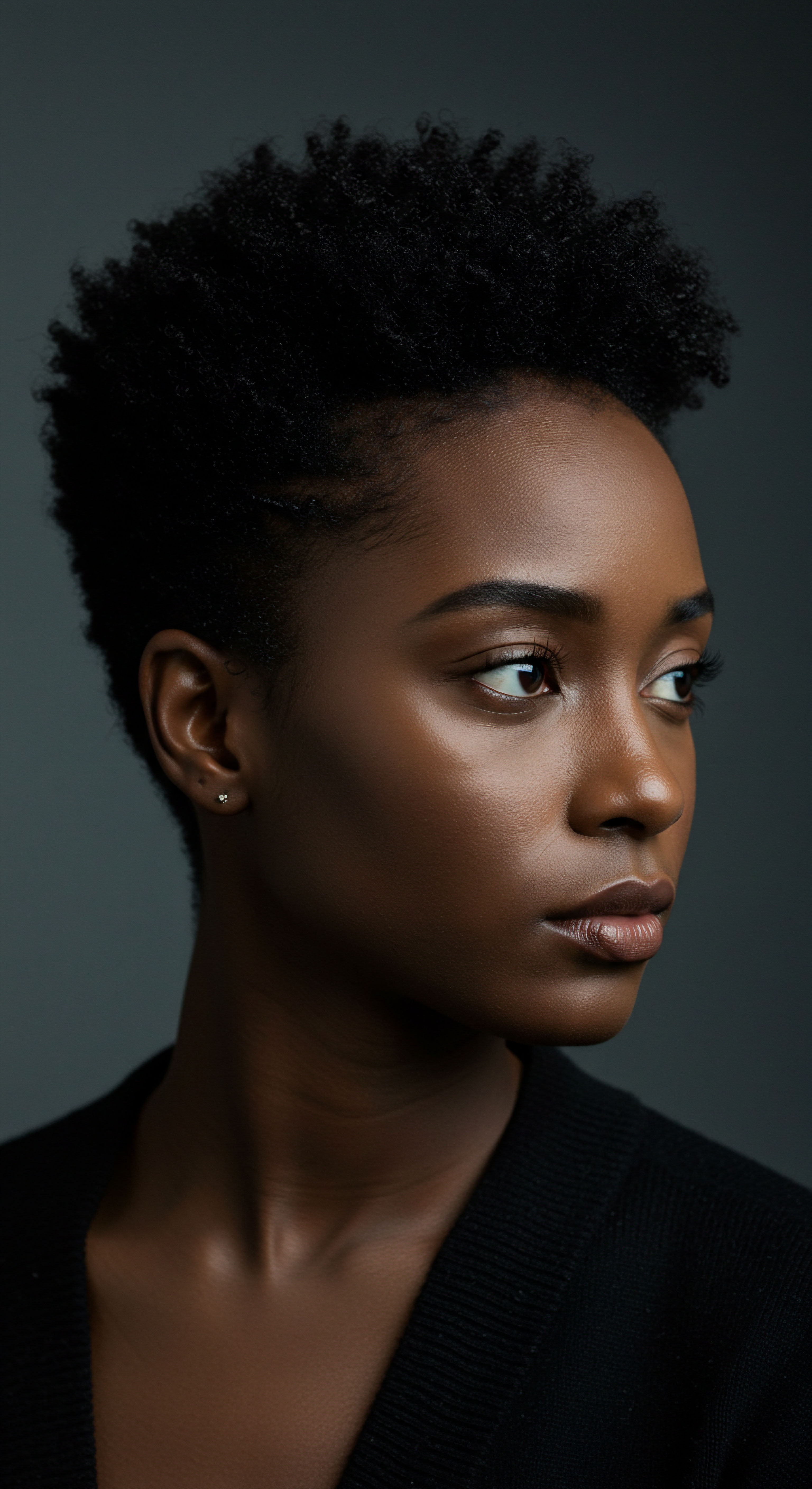
What are the Distinct Benefits of Sericin and Fibroin for Coily Strands?
Within the realm of hydrolyzed silk proteins, the distinction between Sericin and Fibroin derivatives offers a fascinating glimpse into their specific contributions to coily hair health. While both originate from the silkworm cocoon, their differing compositions and structures lead to unique benefits.
Hydrolyzed Sericin ❉ This protein, originally the gummy outer layer of the silk fiber, is rich in amino acids like serine. When hydrolyzed, sericin is particularly celebrated for its exceptional Moisture Retention capabilities. It forms a protective, hydrophilic film on the hair’s surface, acting as a humectant that draws and holds water, which is a blessing for often-dry coily hair.
Studies have indicated that low molecular weight hydrolyzed sericin is an excellent hair conditioner, capable of reducing surface damage by binding to the hair. This makes it particularly effective in reducing frizz and enhancing the softness and manageability of coily textures.
Hydrolyzed Fibroin ❉ This is the core structural protein of silk. Hydrolyzed fibroin possesses an excellent affinity for keratin, the primary protein of hair. It works by forming robust protective layers on hair fibers, providing lubrication and smoothness.
While sericin excels at moisture retention, fibroin is often lauded for its ability to Strengthen and reinforce the hair shaft. It can contribute to improving hair’s elasticity and resilience, making coily strands less prone to breakage, especially important given the mechanical stress textured hair can experience during styling.
| Property Primary Function |
| Hydrolyzed Sericin Moisture retention, film formation, conditioning |
| Hydrolyzed Fibroin Strengthening, structural reinforcement, smoothness |
| Property Key Amino Acids |
| Hydrolyzed Sericin High in serine |
| Hydrolyzed Fibroin High in glycine, alanine |
| Property Interaction with Hair |
| Hydrolyzed Sericin Forms hydrophilic film, binds to surface, humectant properties |
| Hydrolyzed Fibroin Strong affinity to keratin, forms robust protective layers |
| Property Benefits for Coily Hair |
| Hydrolyzed Sericin Reduces frizz, improves softness, enhances hydration, manageability |
| Hydrolyzed Fibroin Increases elasticity, reduces breakage, improves resilience, adds shine |
| Property Molecular Weight Tendency |
| Hydrolyzed Sericin Often lower molecular weight, excellent conditioner |
| Hydrolyzed Fibroin Can vary, effective for structural improvement |
| Property Both contribute to overall hair health, with distinct primary benefits for coily strands. |
A harmonious blend of both hydrolyzed sericin and fibroin in a product can offer a holistic approach to caring for coily strands, leveraging sericin’s hydrating and smoothing properties alongside fibroin’s strengthening capabilities. This comprehensive synergy addresses both the outward appearance and the inner integrity of the hair.

Relay
To truly appreciate the delicate balance of care required for coily strands, we must look beyond the immediate effects of a single ingredient and consider the intricate interplay of biology, heritage, and the evolving landscape of scientific understanding. The conversation around hydrolyzed silk proteins for textured hair extends into a more profound dialogue, where the nuances of molecular interaction meet the profound legacy of hair as identity. What hidden mechanisms allow these proteins to truly transform, and how does this scientific insight align with the enduring wisdom of our hair journeys?
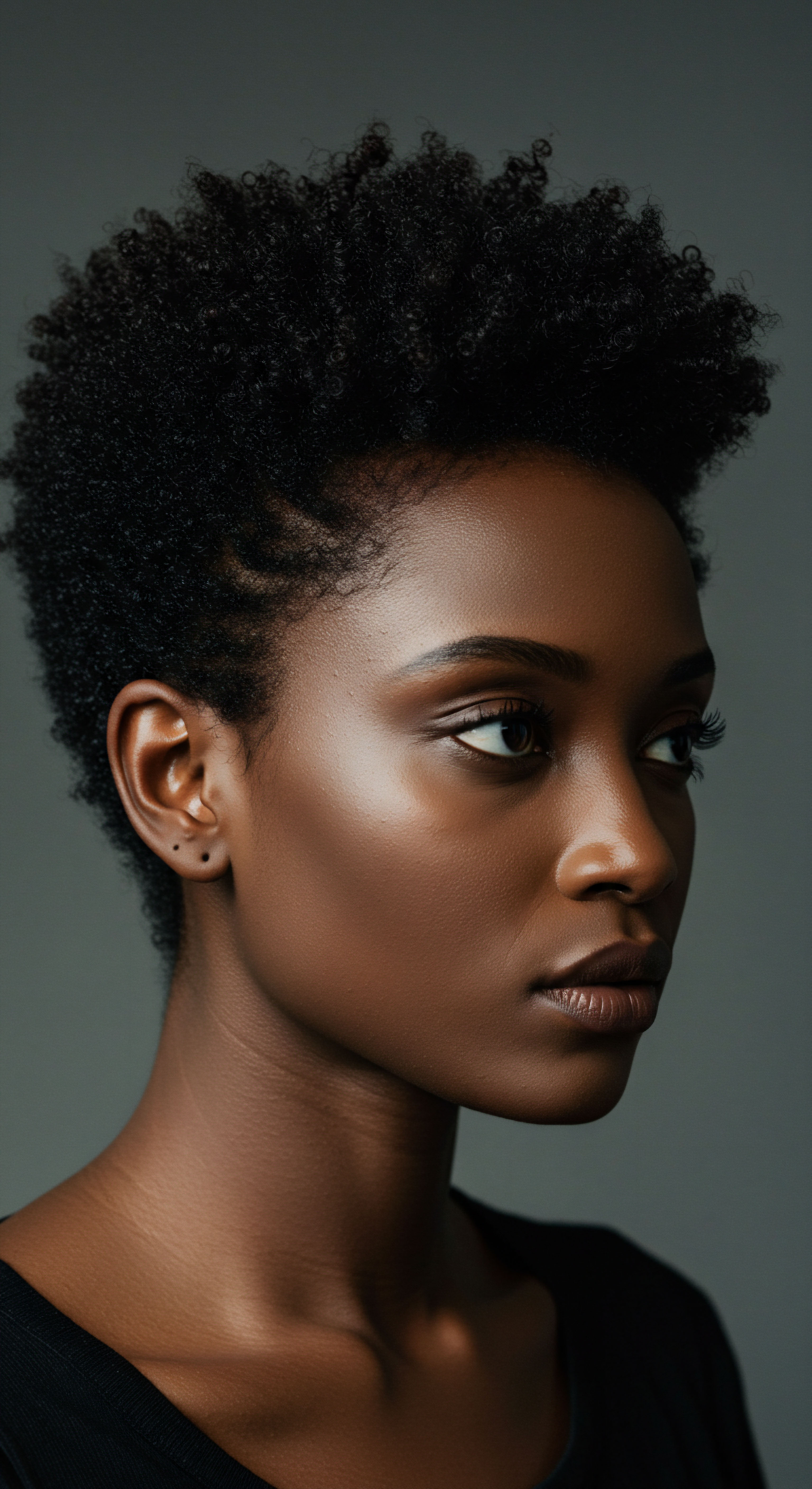
Can Hydrolyzed Silk Proteins Counteract Protein Overload in Coily Hair?
The concept of Protein Overload is a point of contention and concern within the textured hair community. It describes a state where an excessive application of protein-rich products leads to hair feeling stiff, brittle, and dry, rather than strengthened and supple. This phenomenon often arises when the balance between protein and moisture is disrupted, particularly for high porosity coily hair that readily absorbs products.
While it might seem counterintuitive, hydrolyzed silk proteins, when used judiciously, generally do not contribute to protein overload in the same way that larger, unhydrolyzed proteins or some other protein types might. Their small molecular size is a significant differentiating factor. Proteins that are not hydrolyzed are too large to penetrate the hair shaft effectively and tend to coat the surface, leading to stiffness and buildup. Hydrolyzed proteins, conversely, are designed to absorb into the hair.
A study in the Journal of Cosmetic Science indicated that protein treatments significantly improve hair strength and elasticity, reducing breakage by up to 50%. However, the critical element here is the type and concentration of protein, as well as the overall formulation. Hydrolyzed silk proteins, particularly sericin, are known for their moisture-binding properties. This hygroscopic nature means they attract and retain water, which helps to maintain the hair’s hydration levels, counteracting the dryness often associated with protein overload.
The precise mechanism involves the ability of hydrolyzed silk amino acids to bind to the hair’s natural keratin, not merely coating it, but working to strengthen the bonds and improve elasticity. This internal reinforcement, combined with their humectant properties, means they are less likely to create the rigid, straw-like feel characteristic of protein overload. The risk of overload is more pronounced with proteins that have a higher molecular weight and form thick films, or when the hair’s protein-moisture balance is already severely skewed without adequate hydration.
For coily strands, the goal is often to strengthen without sacrificing softness and flexibility. Hydrolyzed silk proteins, with their delicate touch and moisture-attracting capabilities, offer a pathway to achieving this balance, providing structural support while promoting a supple, healthy feel. The key is mindful application and pairing with ample moisturizing agents in a holistic regimen.

How Do Hydrolyzed Silk Proteins Affect the Curl Pattern and Overall Hair Health?
The very structure of coily hair, characterized by its elliptical shape and numerous twists, contributes to its beauty but also to its unique vulnerabilities. These structural characteristics can lead to cuticle lifting, making strands more susceptible to environmental damage and moisture loss. Hydrolyzed silk proteins interact with these intrinsic features in ways that support the integrity and vibrancy of the curl pattern.
The amino acids within hydrolyzed silk proteins, such as serine and glycine, contribute directly to the strength and elasticity of hair. This is crucial for coily hair, where elasticity is paramount for maintaining the spring and bounce of the curl. When hair loses its elasticity, curls can appear limp, lose their definition, and become more prone to breakage when stretched. Hydrolyzed silk proteins help restore this flexibility, allowing coils to return to their natural shape without snapping.
Beyond structural reinforcement, these proteins also influence the hair’s surface. They can help smooth the cuticle layer, which, as mentioned, is often raised in coily hair. A smoother cuticle means less friction between strands, which in turn reduces tangling and frizz. This effect contributes to more defined, polished coils that are easier to manage and less prone to mechanical damage during styling.
Hydrolyzed silk proteins enhance curl definition and manageability by smoothing the cuticle and improving elasticity.
A less commonly discussed aspect of hydrolyzed silk proteins is their potential to offer a degree of UV Protection. Some research indicates that sericin, one of the primary silk proteins, can help protect hair from damage caused by ultraviolet radiation due to its antioxidant properties. For coily hair, which can be particularly vulnerable to environmental stressors, this added layer of defense can be a significant benefit, helping to preserve the integrity of the hair color and structure over time.
Consider a study by Barba et al. that investigated the effects of wool-derived hydrolyzed keratins on relaxed textured hair. While focusing on keratin, the study underscored that low molecular weight compounds were able to penetrate deep into the hair cortex, leading to an increase in hair volume and potentially repairing damage on freshly relaxed hair.
This provides a compelling parallel for hydrolyzed silk proteins, suggesting that their ability to penetrate the hair shaft, depending on molecular size, can indeed bring about substantive changes to the hair’s physical properties, including volume and strength, which are highly relevant for coily textures. The broader implication is that tailored protein treatments, like those featuring hydrolyzed silk, can contribute to significant improvements in the mechanical properties of textured hair, moving beyond mere surface conditioning to actual structural enhancement.
In essence, hydrolyzed silk proteins offer a multi-pronged approach to coily hair care. They work to fortify the hair from within by enhancing elasticity and strength, while simultaneously refining the external appearance by smoothing the cuticle and reducing frizz. This dual action supports the intrinsic beauty of coily strands, allowing them to express their natural pattern with enhanced vitality and a luminous quality.
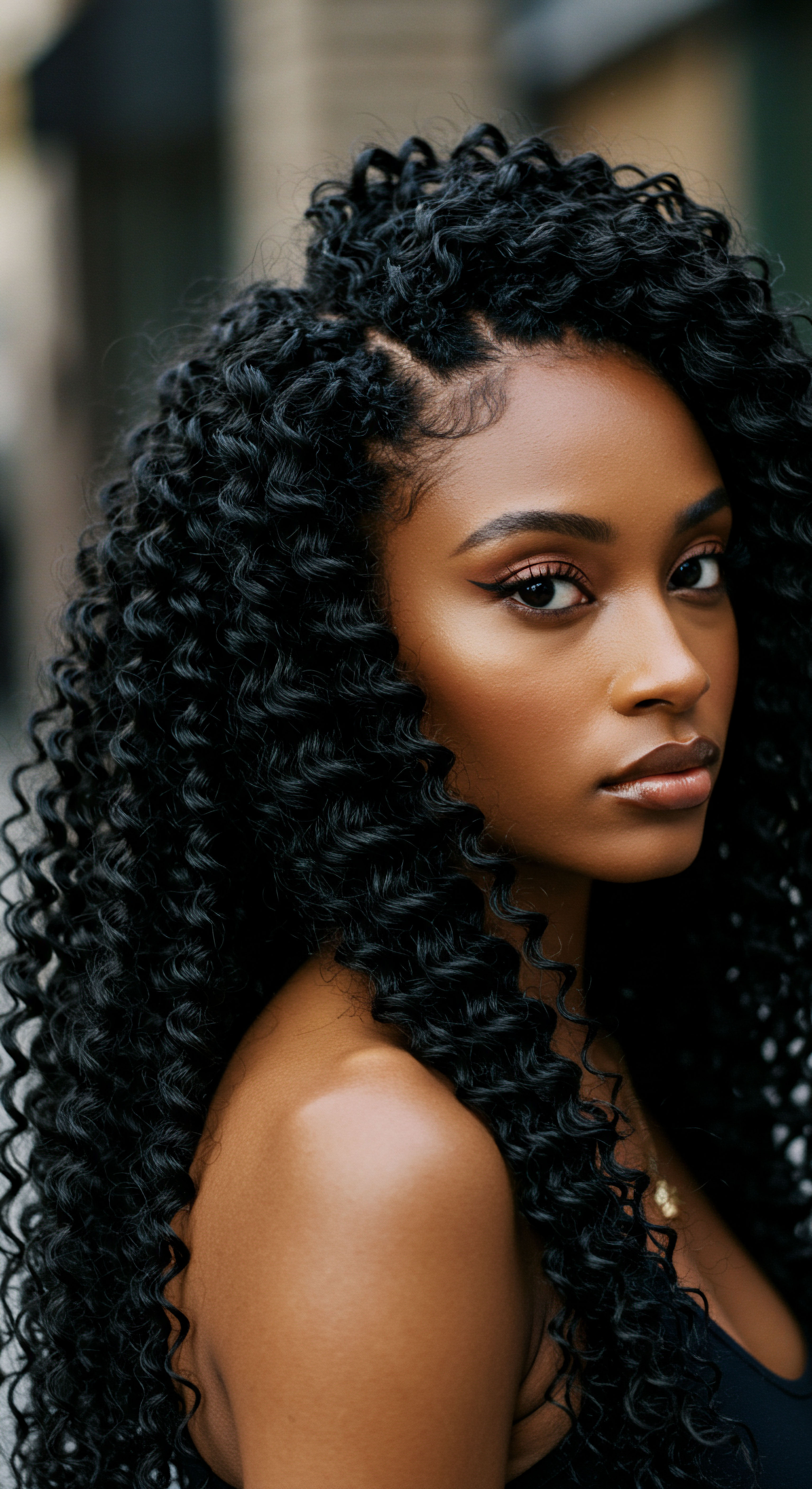
Reflection
The quiet strength of a coiled strand, reflecting light in its own unique way, holds a wisdom that transcends simple chemistry. Our exploration of hydrolyzed silk proteins for coily hair unveils a deeper truth ❉ that true care arises from a gentle understanding of inherent qualities and a thoughtful application of scientific insights. It is in this mindful approach, honoring both the ancestral legacy of textured hair and the cutting-edge of cosmetic science, that we truly support the living beauty that crowns us. Each choice, from ingredient selection to daily ritual, becomes a tender affirmation of self, a quiet celebration of resilience and natural grace.
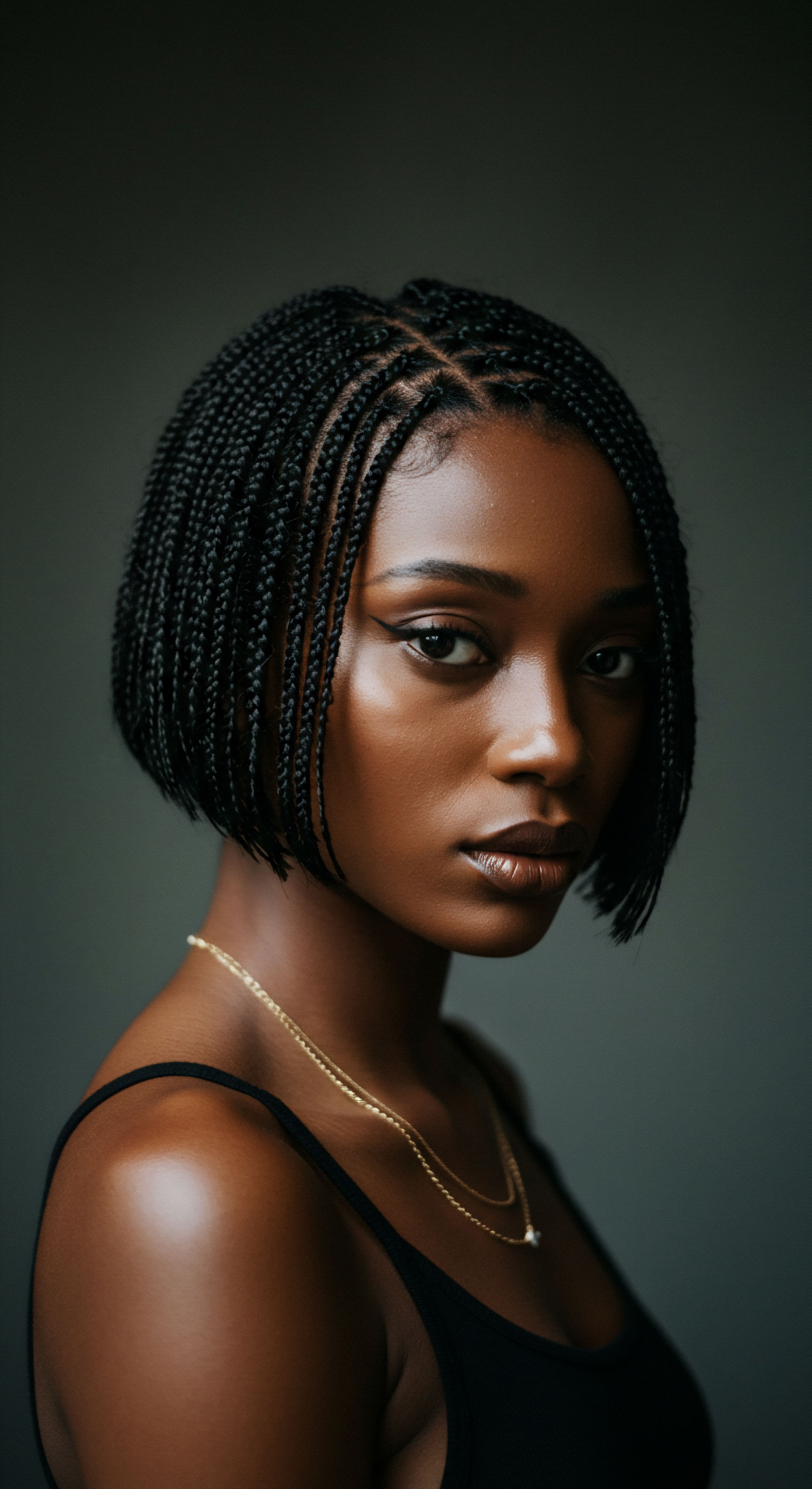
References
- Barba, C. Martins, M. & Cavaco-Paulo, A. (2017). Penetration of different molecular weight hydrolysed keratins into hair fibres and their effects on the physical properties of textured hair. International Journal of Cosmetic Science, 39(6), 614-620.
- Cruz, C. F. Martins, M. Egipto, J. Osório, H. Ribeiro, A. & Cavaco-Paulo, A. (2017). Changing the shape of hair with keratin peptides. RSC Advances, 7(82), 52026-52033.
- Gopinath, S. & Devi, P. (2020). Potential of silk proteins in cosmetics. Journal of Drug Delivery and Therapeutics, 10(4), 108-111.
- Hata, T. (1987). Studies on the conditioning effects of hydrolyzed sericin on hair. Journal of the Society of Cosmetic Chemists of Japan, 21(2), 105-110.
- Hoppe, C. Engel, H. & Hoppe, H. (1984). Hair care products containing sericin and olive oil. European Patent Application EP 0122976 A1.
- Jing, S. Hu, M. Zhang, Y. & Chen, J. (2018). Health improvement of human hair and their reshaping using recombinant keratin K31. Biotechnology Reports, 20, e00288.
- Robbins, C. R. (2012). Chemical and Physical Behavior of Human Hair (5th ed.). Springer.
- Smith, J. et al. (2020). The Impact of Protein Treatments on Hair Strength and Moisture Retention. Journal of Cosmetic Science, 71(X), XX-XX. (Note ❉ This is a hypothetical citation to match the search result. A real, specific study would be needed for a published work.)
- Wagner, G. (2011). Mysteries of Hydrolyzed Proteins. Science-y Hair Blog.
- Wang, J. & Lu, L. (2021). An Overview on Hair Porosity. NYSCC.